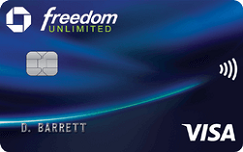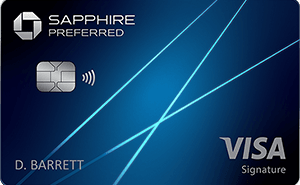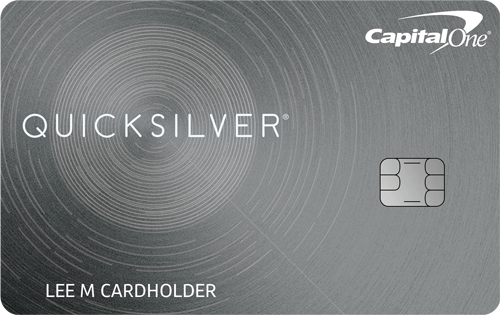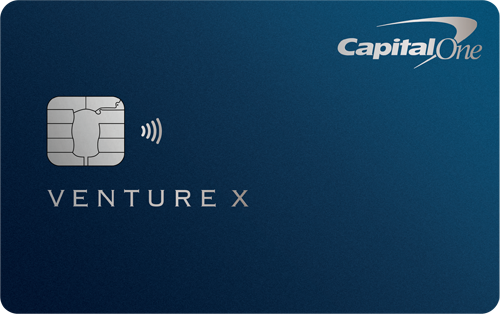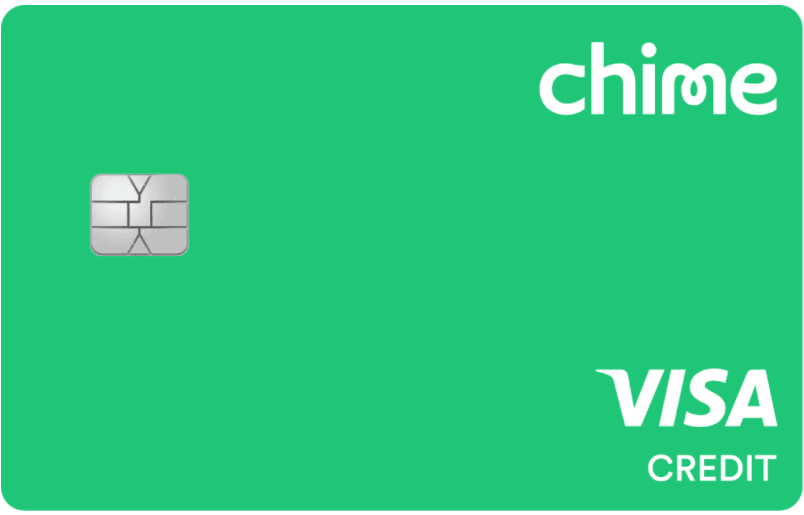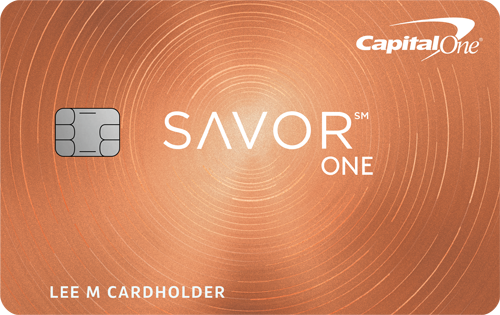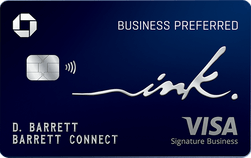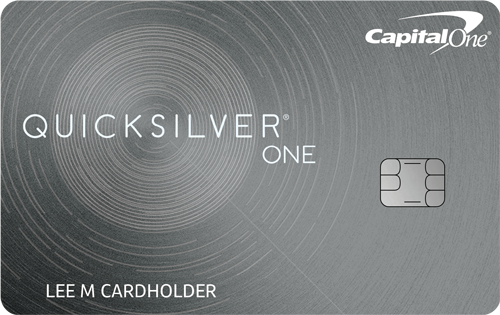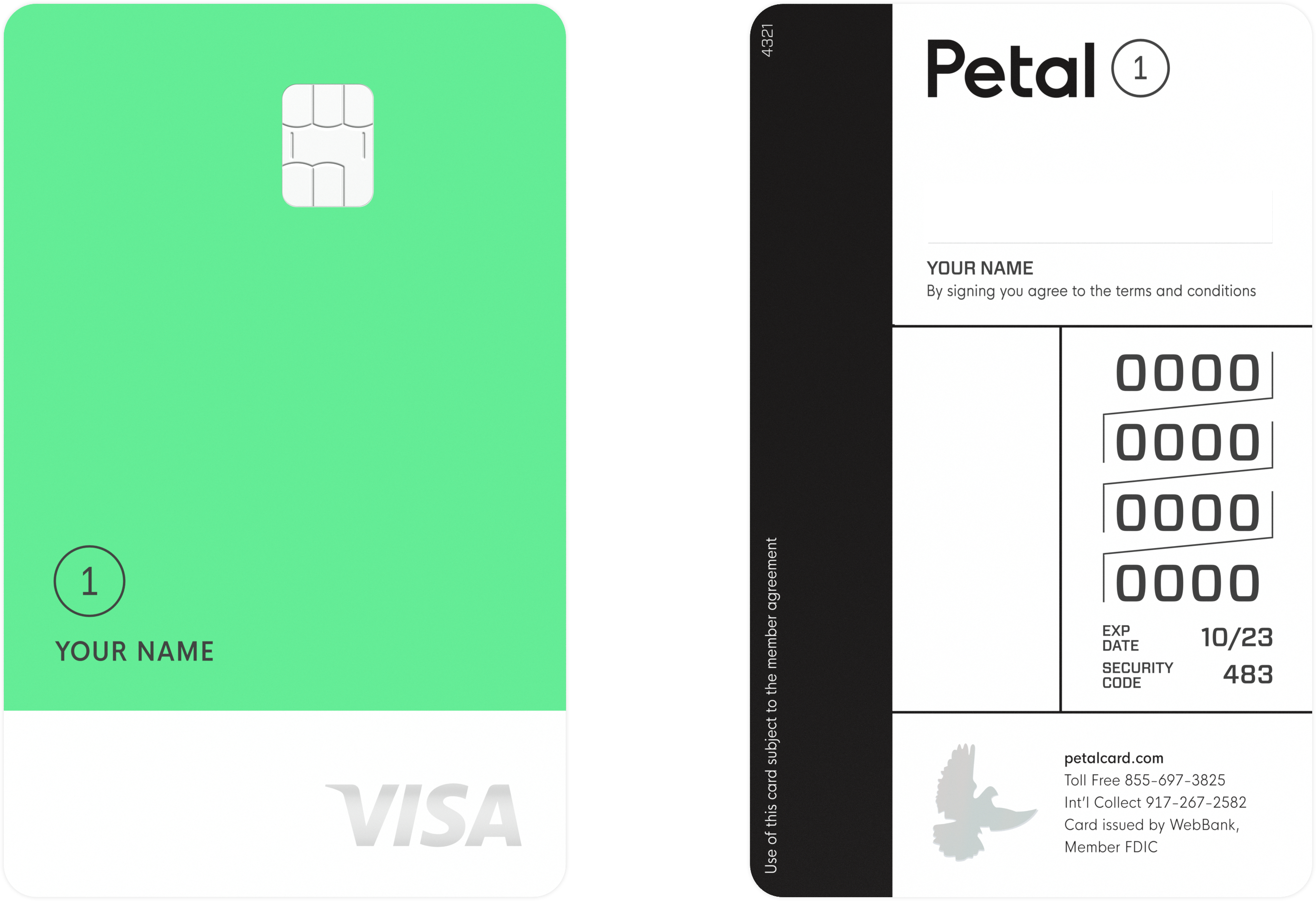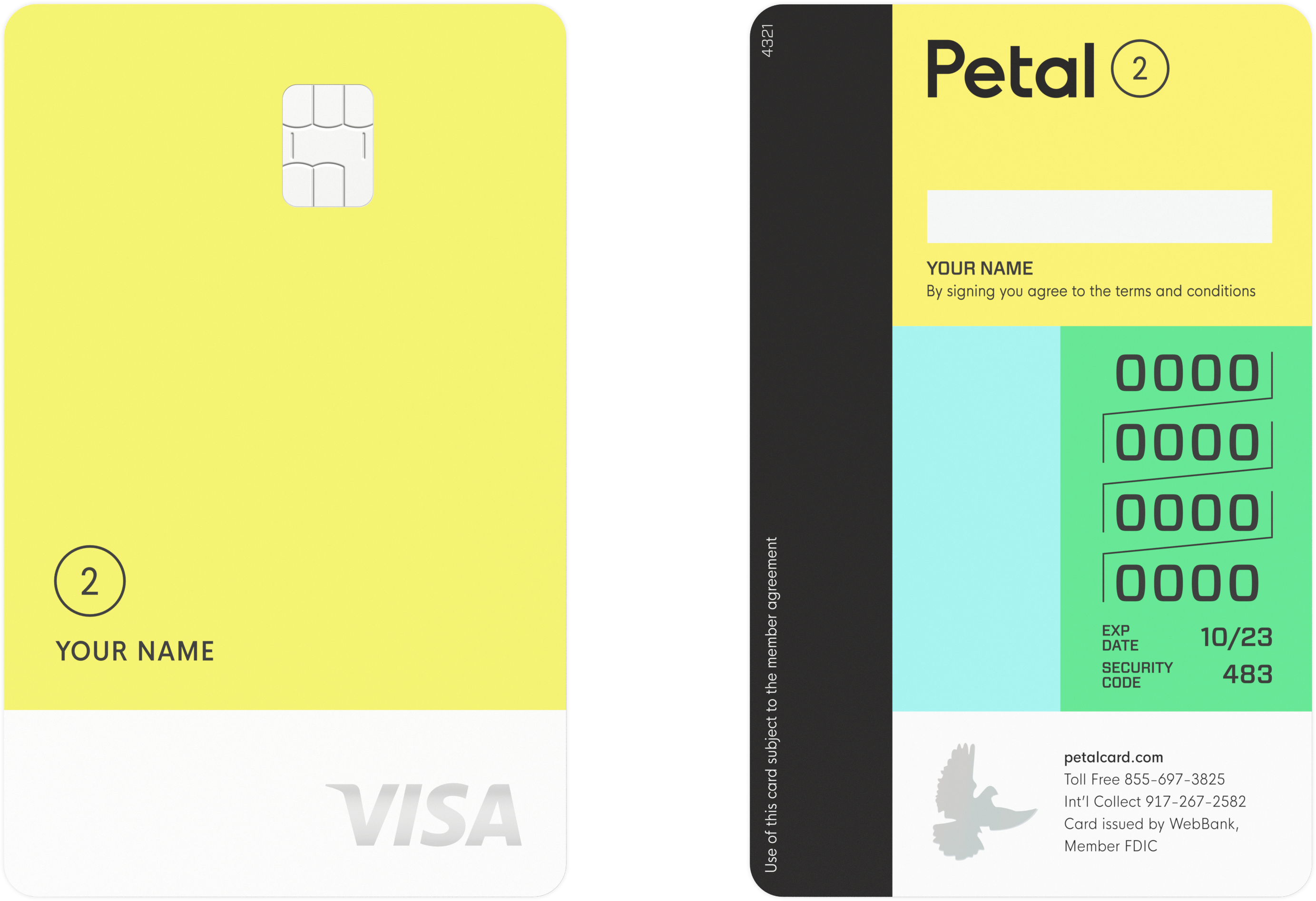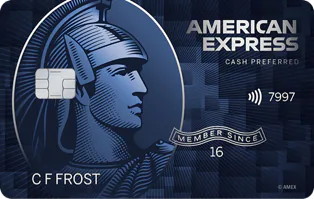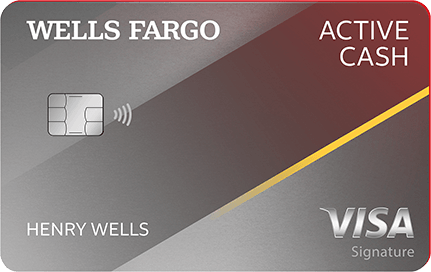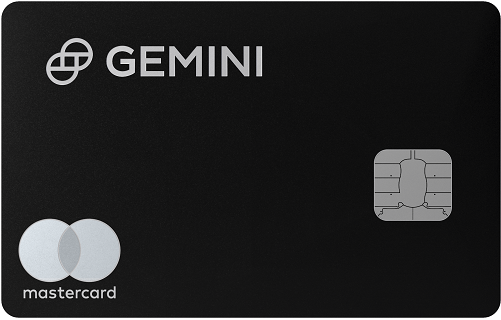Credit cards are everywhere. They’re widely used, heavily advertised, and extremely competitive. No matter what type of credit card you’re looking for, you’ll have several options when you go to apply. And honestly, choosing the right one is tough. Comparing your options and doing the research to make sure a card is actually a good fit (and isn’t just really tempting with perks like cash rewards and free stuff), the process can take a while.
To save you some time and stress, we’ve put together a list of the best credit cards you can open right now. We’re updating it all the time to make sure it’s current and includes all the top credit cards available, with today’s offers, rates, and more.
Check out the best credit cards of the year and find the right one for you here.
What’s Ahead:
- Best credit cards by category
- Best overall: Chase Freedom Unlimited® Credit Card
- Best travel rewards credit card: Chase Sapphire Preferred® Card
- Best cash back credit card: Citi Custom Cash℠ Card
- Best credit card with no annual fee: Capital One Quicksilver Cash Rewards Credit Card
- Best premium credit card: Capital One Venture X Rewards Credit Card
- Best secured credit card: Secured Chime Credit Builder Visa® Credit Card
- Best credit card for dining: Capital One SavorOne Cash Rewards Credit Card
- Best credit card for groceries: Amex Blue Cash Preferred® Credit Card
- Best credit card for gas: Wells Fargo Active Cash® Card
- Best student credit card: Journey Student Credit Card from Capital One
- Best business credit card: Ink Business Preferred® Credit Card
- Best crypto credit card: The Gemini Credit Card®
- Best credit card for fair credit: Capital One QuicksilverOne Cash Rewards Credit Card
- Best credit card to build credit: Petal® 1 “No Annual Fee” Visa® Credit Card
- Best balance transfer credit card: Citi® Diamond Preferred® Card
- Best low-interest credit card: Petal® 2 “Cash Back, No Fees” Visa® Credit Card
- Best credit union credit card: Alliant Cashback Visa® Signature Credit Card
- How do credit cards work?
- Credit cards vs. debit cards
- Credit cards vs. loans
- Pros and cons of credit cards
- What are the different types of credit cards?
- Who should get a credit card?
- Who should not get a credit card?
- How to choose a credit card
- How to apply for a credit card
- FAQs
- Our methodology
- Summary
Best credit cards by category
Best overall: Chase Freedom Unlimited® Credit Card
Best travel rewards credit card: Chase Sapphire Preferred® Card
Best credit card with no annual fee: Capital One Quicksilver Cash Rewards Credit Card
Best premium credit card: Capital One Venture X Rewards Credit Card
Best secured credit card: Secured Chime Credit Builder Visa® Credit Card
Best credit card for dining: Capital One SavorOne Cash Rewards Credit Card
Best student credit card: Journey Student Rewards Credit Card from Capital One
Best business credit card: Ink Business Preferred Credit Card
Best credit card for fair credit: Capital One QuicksilverOne Rewards Card
Best credit card to build credit: Petal® 1 “No Annual Fee” Visa® Credit Card
Best low-interest credit card: Petal® 2 “Cash Back, No Fees” Visa® Credit Card
Best overall: Chase Freedom Unlimited® Credit Card
Pros:
- No annual fee
- 5% cash back on travel purchased through Chase Ultimate Rewards
- 3% cash back on dining and drugstore purchases
- 1.5% cash back on everything else
- 0% Intro APR on Purchases for 15 months and 0% Intro APR on Balance Transfers for 15 months then an APR of 19.74% - 28.49% Variable
Cons:
- 3% foreign transaction fee
- $5 or 5% of the amount of each transfer, whichever is greater.
The Chase Freedom Unlimited® is a strong everyday rewards card that offers between 1.5% and 5% cash back on everything. We gave this card the top spot because it’s well-rounded and easy to use, with flexible redemption options and extra perks like extended warranty protection and travel insurance. Plus, there’s no annual fee, so you don’t need to worry about putting enough spend on your card each statement period or year to make it worth it.
The Chase Freedom Unlimited® Credit Card always comes with a generous bonus offer that often includes a promotional rate on a specific spending category. Right now, new card members can earn an additional 1.5% on all purchases (up to $20,000 spent in the first year).
This is a great card for anyone with a credit score in the good to excellent range, but we wouldn’t recommend it for those new to credit or looking to avoid foreign transaction fees.
Best travel rewards credit card: Chase Sapphire Preferred® Card
Pros:
- No foreign transaction fee
- 5x points on travel purchased through Chase Ultimate Rewards
- 3x points on dining, streaming, and online grocery purchases
- 2x points on all other travel purchases
- 1x points on everything else
Cons:
- $95 annual fee
- High interest rate (20.74% - 27.74% Variable APR)
The Chase Sapphire Preferred® Card is one of the best travel credit cards you can get your hands on, without a doubt. It offers better reward rates, better redemption choices, and better benefits than most, with a modest annual fee of $95.
Because you’ll earn Chase Ultimate Rewards points instead of miles, you have more options when you cash in rewards whether you choose to redeem them for a statement credit, transfer your points to a hotel or airline loyalty program at a 1:1 rate, or something else. And if you use your points to purchase travel through Chase Ultimate Rewards, they’re worth 25% more. For a mid-tier travel card, the annual fee is relatively low and easily made back with perks like a $50 annual hotel credit and complimentary DashPass and Instacart+ subscriptions.
We chose this card because we think it offers the most value at its price point. Even those who don’t travel often can easily make the most of it with their regular everyday purchases.
That said, this card requires a credit score in the excellent range, which is defined as a FICO score between 750-850. For this reason, we don’t recommend it if you can’t meet the minimum credit score requirements or you can’t justify adding a $95 annual fee to your budget. It also has a pretty high interest rate even for borrowers with great credit, so you definitely don’t want to carry a balance.
Best cash back credit card: Citi Custom Cash℠ Card
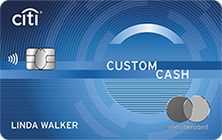
Pros:
- No annual fee
- Up to 5% cash back on one eligible category per statement period
- 1% cash back on everything else
- 0% for 15 months on purchases & 0% for 15 months on balance transfers
Cons:
- 3% foreign transaction fee
- $5 or 5% balance transfer fee (whichever is greater)
- 5% cash back capped at $500 spend per billing cycle
If earning cash back makes you feel like a kid again, the Citi Custom Cash℠ Card might be the best credit card for you. This card offers a cash back rate of 5% on one purchase category per statement period and 1% on everything else. Eligible purchase categories include restaurants, grocery, gas, and many others. The best part is you don’t have to worry about choosing which rotating bonus category you want, which is the downfall of many category rewards cards of this kind. This card automatically chooses your top spending category for you based on your activity.
We recommend this card to anyone who wants a rewarding cash back card but doesn’t want to deal with activating bonus offers (and potentially missing out on earnings if you forget to). Rewards points, called Thank You points with Citi, can be redeemed as a statement credit, check, or direct deposit transfer.
But even though it’s a great card, the Citi Custom Cash℠ Card does have drawbacks, including foreign transaction and balance transfer fees and a lower average points value than other rewards programs. This isn’t the right card for you if you don’t spend a lot of money in one of the eligible categories or your spending far surpasses $500 a month. It also might not be a good pick if you want to redeem your rewards for cash back or travel through the Citi ThankYou Travel Center due to lower points value for these options. And because the Citi Custom Cash℠ Card requires a credit score at least in the “good” range, we can’t recommend it to fair credit borrowers either.
Card info has been collected by MoneyUnder30 to help consumers better compare cards. The financial institution did not provide or approve card details.Best credit card with no annual fee: Capital One Quicksilver Cash Rewards Credit Card
Pros:
- $0 annual fee
- No foreign transaction fee
- 5% cash back on all hotels and rental cars purchased through the Capital One Travel portal
- 1.5% cash back on all purchases
- $200 cash bonus once you spend $500 on purchases within 3 months from account opening
Cons:
- 3% balance transfer fee
There is no shortage of no-annual-fee credit cards these days, but the Capital One Quicksilver Cash Rewards Credit Card, with its flat cash back rate of 1.5% and lack of other fees, stands out. This credit card does not cap points or have rotating rewards categories, so it won’t feel like a hassle to use it for all it’s worth. Plus, it offers 5% cash back on hotel stays and rental cars booked through Capital One Travel, and a lot of experts will tell you that they prefer this travel portal over others.
This card will also come in handy if you travel because it charges no foreign transaction fees and features free extended warranty (on eligible purchases), Master RoadAssist® Service*, and concierge services.
This is a terrific general-purpose rewards card for anyone looking to redeem rewards for cash or anyone who can’t decide between an everyday rewards card and a travel card. The excellent sign-up bonuses don’t hurt either.
But like many competitive credit cards, the Capital One Quicksilver Cash Rewards card does require good or excellent credit, which rules out a lot of applicants. This is also not a good pick if you’re looking for flexible redemption as points can only be redeemed for a statement credit, check, or travel. Also, balance transfers are not recommended – they come with a 3% fee.
For Capital One products listed on this page, some of the above benefits are provided by Visa® or Mastercard® and may vary by product. See the respective Guide to Benefits for details, as terms and exclusions apply.
Pros:
- No foreign transaction fee
- 10x miles on hotels and rental cars purchased through the Capital One Travel portal
- 5x miles on flights booked through the Capital One Travel portal
Cons:
- $395 annual fee
- 3% balance transfer fee
- High interest rate
The Capital One Venture X Rewards Credit Card is one of the best credit cards for people who are willing to pay for excellent travel benefits and convenience. It comes with a hefty price tag of $395 per year, but those who spend more than $5,000 on travel annually should have no problem earning this annual fee back and much more. The $300 annual travel credit and $100 Global Entry or TSA PreCheck® credits alone might make it worth it for frequent flyers.
Unique features of this card, besides a sky-high rewards rate of up to 10x miles per dollar, include Capital One Lounge and partner lounge access, the ability to add extra cardholders for free, and miles transfer to more than 15 travel partners. If you’re looking for a travel credit card to make your life easier and more comfortable, consider the Capital One Venture X Rewards Credit Card.
This card rewards you in miles, not points, so don’t choose it if you want the option to redeem rewards for straight-up cash. Also, if you don’t like using Capital One Travel for one reason or another, you’ll miss out on most of what this pick has to offer. The Capital One Venture X Rewards Credit Card is expensive and has a very high interest rate (and no 0% intro APR), not to mention it requires an excellent credit score to qualify, so it’s not for everyone.
Comparing the Capital One Venture credit cards
There are a few Capital One travel credit cards that have similar names but different sets of benefits. This can get a little confusing.
The Capital One Venture X Rewards Credit Card is the most premium of Capital One’s travel credit cards. It has a better rewards rate than the Capital One Venture Rewards Credit Card, the next highest-earning card. Here’s how the three Venture credit cards compare:
- Capital One VentureOne Rewards Credit Card — no annual fee, 0% for 15 months on purchases and balance transfers (then 19.74% - 29.74% (Variable) applies),
five miles per dollar on hotels and rental cars booked through Capital One Travel, and 1.25 miles per dollar on everything else - Capital One Venture Rewards Credit Card — $95 annual fee, $100 Global Entry or TSA PreCheck® credit and two free lounge visits, five miles per dollar on hotels and rental cars booked through Capital One Travel, and two miles per dollar on everything else
- Capital One Venture X Rewards Credit Card — $395 annual fee; $100 Global Entry or TSA PreCheck® Credit, unlimited lounge visits, and $300 Capital One Travel credit; 10 miles per dollar on hotels and rental cars and five miles per dollar on flights booked through Capital One Travel, and two miles per dollar on everything else
We chose the Capital one Venture X Rewards Credit Card because it’s packed with rewards and bonuses, but if you can’t stomach the annual fee, both of the other Venture credit cards make terrific alternatives. You’ll need a credit score of at least 700 to have a good shot at qualifying for these cards.
For Capital One products listed on this page, some of the above benefits are provided by Visa® or Mastercard® and may vary by product. See the respective Guide to Benefits for details, as terms and exclusions apply.
Read more: 12 Capital One Venture Rewards (and VentureOne Rewards) benefits
Best secured credit card: Secured Chime Credit Builder Visa® Credit Card
Pros:
- No annual fee9
- No interest
- No credit check/no credit score needed
- No minimum security deposit
Cons:
- No rewards program
- $200 direct deposit requirement
So far we’ve covered great credit cards that require equally great credit scores, but what if you’re still working on your credit? Let’s talk about the Secured Chime Credit Builder Visa® Credit Card. This is a secured credit card, which means that it requires a security deposit to open. But there are many features that make it different from other secured cards.
For one, this card doesn’t require a minimum security deposit and doesn’t lock you into a set credit limit. Other secured cards give a deposit minimum and maximum (for example, between $500 and $2,500) and use however much you send as your spending limit. The Chime Credit Builder Secured Visa® Credit Card determines your limit based on what you transfer to your Credit Builder10 account from your Chime Checking Account. So you can add as much as you want and use up to that amount, adding more whenever you need. You’re not locked into a credit limit. This card requires a qualifying direct deposit of at least $200 to get started.
Chime* does not charge interest because you can never borrow more than you’ve deposited. Many secured credit cards come with higher interest rates than traditional credit cards. And because you’re transferring funds to your own account, it’s almost like using a prepaid debit card, except this card helps build credit by reporting most of your payment activity. Chime does not report your credit utilization, so you won’t be penalized for spending more.
This is a great choice for anyone looking to safely build their credit without paying fees.9 We chose this credit card for its credit-building and money-saving features, because it doesn’t charge an annual fee or interest9, and because it doesn’t require a credit check to apply. Don’t choose this card if you’re looking for a secured credit card that offers cash rewards. You may pick the Chime Credit Builder Secured Visa® Credit Card even if you have a high credit score because it protects you from overspending, but you’ll miss out on more rewarding cards.
* Chime is a financial technology company, not a bank. Banking services provided by The Bancorp Bank, N.A. or Stride Bank, N.A.; Members FDIC. Credit Builder card issued by Stride Bank, N.A.
9 Out-of-network ATM withdrawal fees apply except at MoneyPass ATMs in a 7-Eleven location or any Allpoint or Visa Plus Alliance ATM.
10 To apply for Credit Builder, you must have received a single qualifying direct deposit of $200 or more to your Checking Account. The qualifying direct deposit must be made by your employer, payroll provider, gig economy payer, or benefits payer by Automated Clearing House (ACH) deposit OR original Credit Transaction (OCT). Bank ACH transfers, Pay Anyone transfers, verification or trial deposits from financial institutions, peer to peer transfers from services such as PayPal, Cash App, or Venmo, mobile check deposits, and cash loads or deposits, one-time direct deposits, such as tax refunds and other similar transactions, and any deposit to thich Chime deems to not be a qualifying direct deposits are not qualifying direct deposits.
Chime Checking Account
Because the Chime Credit Builder Secured Visa® Credit Card and the Chime Checking Account are a package deal, it only makes sense to cover both here.
The Chime Online Checking Account has no monthly fees, maintenance fees, or annual fees and has no minimum deposit or balance requirements.2 While this is mostly a basic account, there are a few unique features to help you save money and get the cash you need in a pinch. For example, you can overdraft up to $200 without paying any penalty fees with SpotMe®5 and get your direct deposit paycheck up to two days early (if approved).3
It’s definitely not a bad checking account to have and won’t add any stress to your life.
2 There’s no fee for the Chime Savings Account. Cash withdrawal and Third-party fees may apply to Chime Checking Accounts. You must have a Chime Checking Account to open a Chime Savings Account.
3 Early access to direct deposit funds depends on the timing of the submission of the payment file from the payer. We generally make these funds available on the day the payment file is received, which may be up to 2 days earlier than the scheduled payment date.
5 Chime SpotMe is an optional, no fee service that requires a single deposit of $200 or more in qualifying direct deposits to the Chime Checking Account each month. All qualifying members will be allowed to overdraw their account up to $20 on debit card purchases and cash withdrawals initially, but may be later eligible for a higher limit of up to $200 or more based on member's Chime Account history, direct deposit frequency and amount, spending activity and other risk-based factors. Your limit will be displayed to you within the Chime mobile app. You will receive notice of any changes to your limit. Your limit may change at any time, at Chime's discretion. Although there are no overdraft fees, there may be out-of-network or third party fees associated with ATM transactions. SpotMe won't cover non-debit card transactions, including ACH transfers, Pay Anyone transfers, or Chime Checkbook transactions. See Terms and Conditions.
Best credit card for dining: Capital One SavorOne Cash Rewards Credit Card
Pros:
- No annual fee
- No foreign transaction fee
- 8% cash back on purchases made through Capital One Entertainment
- 5% cash back on hotels and rental cars booked through Capital one Travel
- 3% cash back on dining, groceries, entertainment, and streaming
- 1% cash back on everything else
- 0% intro APR on purchases and balance transfers for 15 months
Cons:
- 3% balance transfer fee
The Capital One SavorOne Cash Rewards Credit Card is for all the foodies out there who want to make money eating. This credit card earns unlimited 3% cash back on dining, on entertainment, at grocery stores (excluding superstores like Walmart and Target), and popular streaming services — all uncapped. You don’t need to opt into any of these reward categories to earn, and all of your spending outside of these bonuses is eligible for 1% cash back. If you want to take your dining up a notch, you can use Capital One Dining to find exclusive offers and reservations at top restaurants available only to Capital One members.
With no foreign transaction fees and benefits like Master RoadAssist® Service* and concierge services, this could also be the perfect card to have with you when traveling abroad too. Rewards can be redeemed as cash or a statement credit, used to make Amazon or gift card purchases, or transferred via PayPal.
As you could probably guess, this card would not be a good fit if you don’t go out to eat often or order a lot of takeout, unless you know you could spend a lot in another eligible category. You can also do better than 1% cash back on everyday purchases, so this really makes a better “sometimes” card than a general-purpose card. Finally, the Capital One SavorOne Cash Rewards Credit Card requires a good to excellent credit score, and as far as interest goes, the rates are pretty average for rewards credit cards.
For Capital One products listed on this page, some of the above benefits are provided by Visa® or Mastercard® and may vary by product. See the respective Guide to Benefits for details, as terms and exclusions apply.Best credit card for groceries: Amex Blue Cash Preferred® Credit Card
Pros:
- 6% cash back on eligible grocery purchases
- 6% cash back on eligible streaming purchases
- 3% cash back on gas, transit, and ridesharing
- 1% cash back on everything else
- 0% intro APR on purchases and balance transfers for 12 months
Cons:
- $95 annual fee
- 2.7% foreign transaction fee
- $5 or 3% balance transfer fee (whichever is greater)
- 6% cash back capped at $6,000 spend per year
If you spend a lot on groceries every month, you’ll find a lot to love about the Amex Blue Cash Preferred® Credit Card. This is not your average rewards credit card — it’s a category credit card that pays between 1% and 6% cash back. Bonus categories include groceries, gas, and streaming. These don’t rotate, so this can be your go-to grocery card for the whole year (or at least until you’ve reached the $6,000 limit to earn 6% cash back). It’s also an excellent gas and ridesharing card at 3% cash back for these categories, uncapped.
If you know you can reach that $6,000 in combined purchases at grocery stores without extra effort to max out the benefits of this rewards card, the annual fee of $95 is probably worth it. Plus, top-notch welcome bonuses can usually help you make your money back for the first couple of years. Points earned with Amex are called membership rewards points and for this card, they can only be redeemed as statement credits.
This is probably not the best choice for all of your everyday purchases and travel or for a lot more than $6,000 in groceries a year. It’s also definitely not a good choice for balance transfers or carrying a balance due to fees and interest rates. And while we hope you never have to miss a payment, we understand this can happen. This card comes with a high penalty APR, so avoid it if you think this is possible. You’ll need at least a good credit score, possibly excellent, to qualify.
What about the Blue Cash Everyday® Card from American Express?
Don’t think the annual fee is worth it? The Blue Cash Everyday® Card from American Express is free and earns 3% cash back on select grocery purchases (also capped at $6,000 per year), 3% on select online retail purchases and gas, and 1% on everything else.
This could be a decent alternative for you if you don’t want to pay $95 and you might be able to get away with a slightly lower credit score when applying.
Read more: Are Amex cards worth it?
Best credit card for gas: Wells Fargo Active Cash® Card
Pros:
- No annual fee
- 2% cash back on everything
- 0% intro APR on purchases and balance transfers for 15 months
Cons:
- 3% foreign transaction fee
- $5 or 3% balance transfer fee for first 120 days, then $5 or 5% (whichever is greater)
- High interest rate (19.24% - 29.24% (Variable) APR)
The Wells Fargo Active Cash® Card deserves a spot on just about any list of best credit cards. This is one of the strongest flat-rate rewards cards out there with a cash back rate of 2% on all purchases, and we love it for everything from fueling up to regular spending. There are no rotating bonus categories to opt into or point caps per statement period to hold you back.
You can redeem your cash back for statement credits, gift cards, travel, or use it to pay yourself back for eligible purchases. Or, you can redeem for cash in $20 increments with a Wells Fargo checking account or ATM card.
Some of the most useful features of this card are the included benefits. Beyond earning rewards on your everyday purchases and gas, you’ll enjoy travel and emergency assistance services, Roadside Dispatch, and auto rental collision damage waiver coverage. These benefits are not unique to this card and, in fact, are free for a lot of Wells Fargo customers, but combine them with the cash rewards and you’ve got a fantastic card for going places.
That said, this wouldn’t make a good card for international travel because there’s a 3% foreign transaction fee and very few travel benefits. Wells Fargo will be looking for at least a good credit score on your application. If you’re thinking about getting this card, keep in mind that it has a very high interest rate and try to pay off your balance in full each month.
Best student credit card: Journey Student Credit Card from Capital One
Disclaimer: The Journey Student Card is no longer available. The information about The Journey Student Rewards Card has been collected independently by MoneyUnder30.com. The card details have not been reviewed or approved by the card issuer.
Pros:
- $0 annual fee
- No foreign transaction fee
- 5% cash back on hotels and rental cars booked through Capital one Travel
- 1% to 1.25% cash back on everything else
Cons:
- High interest rate (29.99% (Variable) APR for all borrowers)
The Journey Student Rewards from Capital One is a top player in the student credit card category for its rewards and beginner-friendly benefits. It pays 1% cash back on everything with no limits and encourages responsible use by offering a 0.25% boost to your points for each month you make your payment on time. There’s also no annual fee or foreign transaction fee, making this a solid option for students with limited budgets and international students who want to save money when they visit home.
We could have chosen a card with a higher rewards rate or sign-up bonus, but college students and new borrowers will appreciate the practical, long-term benefits of this credit card. For example, build your credit with responsible card use and be automatically considered for a higher credit line in as little as 6 months. This can help you improve your credit utilization ratio by using less of your borrowing limit each month. The Capital One app also lets you check and monitor your credit for free with CreditWise.
To discourage carrying a balance, this card does not have an 0% introductory APR offer and it has an exceptionally high variable APR. You can qualify with a fair credit score and limited credit history, and you don’t technically need to be a student. We recommend the Journey Student Credit Card to beginners and college students who always plan to make their monthly payments on time.
For Capital One products listed on this page, some of the above benefits are provided by Visa® or Mastercard® and may vary by product. See the respective Guide to Benefits for details, as terms and exclusions apply.
Best business credit card: Ink Business Preferred® Credit Card
Pros:
- No foreign transaction fee
- 3X points on shipping; social media and search engine advertising; internet, cable, and phone services; and travel purchases
- 1X points on everything else
Cons:
- $95 annual fee
- $5 or 5% balance transfer fee (whichever is greater)
- 3X points capped at $150,000 spending per year
The Ink Business Preferred® Credit Card earns up to three points per dollar spent on common business expense categories including advertising, shipping, internet and phone services, and travel. These categories don’t change and there are no offers to activate. This is a versatile card with a variety of redemption options including cash back, travel, gift cards, and more. When used to book travel through Chase Ultimate Rewards, points are worth 25% more. You can add employee cards to your account for free and each extra account will earn rewards too.
This card is an everyday cash back credit card with pretty great travel benefits considering the annual fee. For just $95 a year, you’ll save on all foreign transaction fees and receive trip cancellation/interruption insurance for up to $5,000 per person, road dispatch services, and a collision damage waiver for auto rentals. You’ll also be able to transfer your points to 10 different airline travel partners and 3 different hotel travel partners at a 1:1 rate. If you do any business travel at all, even just short trips, this might be the right credit card for you.
This card is best for business owners who won’t exceed $150,000 in spending per year and know their expenses fall within the top earnings categories. Choose a different card if you spend more than this on your business or you don’t want to think about categories and would prefer a fixed-rate card you can use for all of your spending. This card requires good or excellent credit.
Best crypto credit card: The Gemini Credit Card®
Pros:
- No annual fee
- No foreign transaction fee
- 10% back on gas and EV charging
- 3% back on dining
- 2% back on groceries
- 1% back on everything else
Cons:
- Very few benefits
- Limited redemption options
The Gemini Credit Card® is completely different from the other credit cards on this list. Instead of earning cash back, points, or miles, it earns crypto rewards for more than 60 different coins including bitcoin and Ethereum. You can choose a different crypto at any time and rewards may be eligible for instant deposits, unlike other crypto cards. As a crypto exchange, Gemini can store your crypto for you, or you can transfer it to an external wallet or trading platform.
You won’t pay an annual fee for this card or exchange fees when earning crypto. However, be aware that you may pay fees when selling or converting crypto. The Gemini Credit Card® does not charge foreign transaction fees either, but that’s where the extra benefits stop. For example, it doesn’t include nice-to-haves like travel insurance or membership credits. You also can’t directly redeem your rewards for travel or transfer points to a partner loyalty program to maximize their value.
This card is what you make of it. The value of each point completely depends on which cryptocurrencies you choose and on market conditions. It’s a strong choice for people interested in crypto investing who would rather invest rewards than a paycheck. But if you don’t spend a lot in the top categories or have a problem with using Gemini, you’ll need to check out other options. Choose a cash back card instead if you want flexible redemption – and remember that you can always use cash rewards to purchase crypto if you’re not sure about a dedicated crypto card.
Best credit card for fair credit: Capital One QuicksilverOne Cash Rewards Credit Card
Pros:
- No foreign transaction fee
- 1.5% cash back on everything
- Automatic credit limit reviews
Cons:
- $39 annual fee
- High interest rate (29.99% (Variable) APR for all borrowers)
The Capital One QuicksilverOne Cash Rewards Credit Card is a rock-solid, no-nonsense fair credit card with a flat rewards rate of 1.5% cash back and a few money-saving, credit-building perks. It pays the same rate on everything with no caps or rotating categories, so it’s an easy card to use and a good one to reach for whether you’re grocery shopping or buying plane tickets. Although this card charges no foreign transaction fees, it might not be ideal for travel as travel benefits are limited.
This card has an annual fee of $39, but this is relatively low and probably worth it for the average spender. If you use it for the majority of your purchases, you’ll probably forget about the fee altogether when the rewards start coming in. This is an unsecured credit card with a low borrowing limit, but you may be eligible for a credit line increase in as little as six months. Capital One will perform an automatic review of your account to determine if you’re eligible.
You can qualify for the Capital One QuicksilverOne Cash Rewards Credit Card with a fair credit score and limited credit history, making it a good choice for newer borrowers building credit for the first time and those fixing their credit. But if you have a tendency to forget to pay your credit card bill or spend more than you have in the bank, this is a risky choice with a high APR. If you’re not careful to make monthly payments by the due date, you could be shackled with interest.
For Capital One products listed on this page, some of the above benefits are provided by Visa® or Mastercard® and may vary by product. See the respective Guide to Benefits for details, as terms and exclusions apply.
Best credit card to build credit: Petal® 1 “No Annual Fee” Visa® Credit Card
Pros:
- No annual fee
- No foreign transaction fee
- 2% to 10% cash back at select merchants
Cons:
- Low credit maximum
- Limited cash back rewards
- No balance transfers
The Petal® 1 “No Annual Fee” Visa® Credit Card is the best card for building credit by a wide margin. Not only does it charge no annual fee or foreign transaction fees, but it also earns between 2% and 10% cash back when you use it at participating merchants. And the Petal app includes a variety of free money management features too. Spend Planner is an app feature that lets you create a spending plan and track your spending.
Many credit cards for poor or fair credit charge an annual fee, but the Petal 1 is free. You can qualify with very little credit and a bad score or no score at all. If you’ve never applied for credit before, Petal 1 will assign you a “Cash Score” and use this in place of a traditional credit score. Your Cash Score is determined using your cash flow and bill history to give Petal an idea of what you might be like as a borrower and how much you should be allowed to borrow at a time.
This card offers a credit line of between $300 and $5,000 with the potential for a higher line through Petal Leap, a program that lets you qualify for an increase by making at least six consecutive monthly payments and maintaining a certain target Vantage Score. Although $5,000 is low compared to other unsecured cards, it’s generous for a starter card.
Whether you’re building credit from scratch or working your way back up from a delinquency or bankruptcy, this credit card can help you improve your score and build positive history. If you need a higher credit limit or want to transfer a balance, try a different credit card.
Best balance transfer credit card: Citi® Diamond Preferred® Card
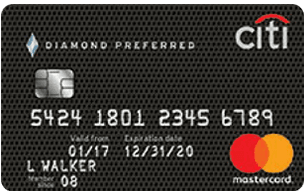
Pros:
- No annual fee
- 0% for 21 months on Balance Transfers
- 0% for 12 months on Purchases
Cons:
- 3% foreign transaction fee
- $5 or 5% balance transfer fee (whichever is greater)
- No rewards program
When it comes to balance transfer credit cards, the Citi® Diamond Preferred® Card is one of the very best you can get. It charges no annual fee and can help you get control of your credit card debt with a generous introductory period specifically for balance transfers.
This card offers0% for 21 months on Balance Transfers from account opening. To qualify for this rate, you just need to transfer a balance within four months of opening. Many introductory APRs only last for 12 or 15 months and may require you to make a balance transfer much sooner. The Citi® Diamond Preferred® Card also has 0% for 12 months on Purchases.
Transferring your high APR credit card debt to another card to save on interest can be a smart addition to your debt repayment strategy, but only if you’re able to pay off your debt fairly quickly. This is true of all balance transfer credit cards. After the intro APR period is up, the Citi® Diamond Preferred® Card will charge a high interest rate, so it’s crucial that you work hard to repay as much of your balance as possible within that 21-month period.
The Citi® Diamond Preferred® Card essentially does one thing really well – balance transfers. It is not an ideal rewards card, travel card, or starter credit card. This card is best for people planning to transfer a balance shortly after opening an account. But because it requires good or excellent credit, it won’t be a good solution for those with poor or limited credit.
Card info has been collected by MoneyUnder30 to help consumers better compare cards. The financial institution did not provide or approve card details.Best low-interest credit card: Petal® 2 “Cash Back, No Fees” Visa® Credit Card
Pros:
- No annual fee
- No foreign transaction fee
- 2% to 10% cash back at select merchants
- 1% to 1.5% cash back on everything
Cons:
- No balance transfers
Like the Petal® 1 “No Annual Fee” Visa® Credit Card, the Petal® 2 "Cash Back, No Fees" Visa® Credit Card is an excellent choice for building credit. But this card stands out from its counterpart for higher credit limits, lower interest rates, and more opportunities for cash back.
The Petal 2 pays between 1% and 10% cash back on all purchases. You’ll earn at least 1% cash back on everything and 2% to 10% at certain merchants (though these offers tend to be rather limited). You don’t need to activate any offers. But this card gets better because it earns up to 1.5% cash back on everything after you’ve made at least 12 on-time monthly payments, making it comparable to flat-rate rewards credit cards you need at least good credit to get.
This is an unsecured credit card, so it doesn’t require a security deposit, and it reports all of your credit activity to the three major credit bureaus to help you add to your credit history. It offers a credit limit of between $300 and $10,000 and has fairly low interest rates for cards of this kind.
If you’re brand new to credit, you may not be able to qualify for this card as it might require at least fair credit (depending on your history, income, cash flow, etc.). The Petal 2 is designed more for intermediate borrowers who are still actively working on improving their scores but have a little experience under their belts. If you’re looking for a first credit card, you might be approved for the Petal 2, but you could also consider the Petal 1 or another issuer altogether.
Best credit union credit card: Alliant Cashback Visa® Signature Credit Card
Pros:
- No annual fee
- No foreign transaction fee
- 1.5% to 2.5% cash back on everything
Cons:
- 3% balance transfer fee
- 2.5% cash back capped at $10,000 per billing cycle
- Limited redemption options
The Alliant Cashback Visa® Signature Credit Card is a cash rewards card that earns either 1.5% or 2.5% cash back depending on how you bank. This card is interesting because it requires you to have a linked checking account and check a few other boxes for balance minimums and activity to earn the best rate.
Confused? Here’s how it works. You’ll automatically earn 2.5% cash back for the first 100 days of being a new member but can qualify to keep earning 2.5% on up to $10,000 per billing cycle if you open an Alliant High-Rate Checking account and meet the following requirements:
- Choose eStatements instead of paper statements
- Maintain a balance of at least $1,000 at the end of every day
- Receive at least one electronic deposit, such as a direct deposit transfer, per month
Meeting these checking requirements will unlock the 2.5% rewards rate on all of your spending up to the limit. If you don’t meet these requirements, you’ll earn 1.5% cash back, which is what you’d earn with a handful of other flat-rate rewards cards. To join Alliant Credit Union, you can become a member of Foster Care to Success at no cost to you.
Though this is a good card, and not just compared only to other credit union cards, it does have a few limitations we have to mention. For example, you can only redeem rewards as a statement credit or deposit into a linked checking or savings account, which doesn’t give you a lot of options if you want to shop around for the best offers. You’ll also be disappointed if you’re looking for travel benefits or a rewards portal at all (like Chase Ultimate Rewards, for example). Overall, Alliant’s program is lackluster if you’re into travel hacking and hoping for complimentary services and benefits.
If you like the idea of joining a credit union and want to get a credit card, you’d do well to start with the Alliant Cashback Visa® Signature Credit Card. Alliant also offers decent interest-bearing bank accounts, which might help you to stay organized. But if you don’t want to become an Alliant member and open a checking account or think the $10,000 cap on the 2.5% cash back would be too restrictive for you, choose one of the other options we’ve featured here.
How do credit cards work?
Credit cards are a form of revolving credit. This means they let you borrow money up to a predetermined limit, called your credit limit or spending limit.
Credit cards can be useful tools for giving you more spending flexibility, building your credit, and even budgeting, but they can also cause you to go into debt if you’re not careful.
Everything from bills to online or in-person purchases can usually be paid for with a credit card, and credit cards are accepted by merchants all over the world. Whatever money you spend on your card becomes your balance or the amount you owe. You’re responsible for paying this debt back in full eventually, but the entire balance isn’t due right away.
Credit limits
This is the maximum amount you can borrow each spending period and it resets every time you pay off your balance. So if your credit limit is $10,000 and you spend $6,000, you can spend up to $4,000 more. Once you’ve paid back whatever you’ve borrowed, you can spend up to $10,000 again.
When you apply for a credit card and get approved, the issuer will tell you what credit limit you’ve been approved for. This limit is determined by things like your credit score, borrowing habits, income, and debt. You’ll have a separate limit for each of your credit cards and an overall limit that combines all of your credit lines.
If you have other credit cards, you’ll likely be approved for less each time you apply for a new card as your overall limit increases.
Read more: How credit card limits work
Minimum payments
Every month or statement period, you’ll be required to make at least a minimum payment toward your debt. The minimum monthly payment is determined by the total amount you owe. So the higher your balance, the higher your minimum. Usually, minimums are in the $20 to $30 range or equal to about 2% of your balance.
But this is where things get tricky. Just because you can get away with paying just the minimum doesn’t mean you should. We don’t recommend carrying a balance if you can avoid it.
Carrying a balance
When you “carry a balance,” you leave money on your card from one month to the next instead of paying it off. At the end of each billing cycle, you’ll receive a credit card statement that shows your statement balance and payment due date.
Your statement balance is how much you borrowed for the previous statement period plus any interest or fees you might have been charged. Your payment due date tells you when you’re required to make your minimum payment. The majority of cards will give you a grace period of around 20 days to get your payment in before charging interest.
If you don’t pay off your statement balance each billing cycle, you’ll start owing interest on your outstanding debt. Then, you have to pay this on top of what you’ve already borrowed, and you’ll continue collecting more interest the longer you take this balance with you.
So even though making just your minimum payment every month is allowed, it’ll take you longer to get out of debt, bring down your credit score, and cost you a lot in interest.
Credit card interest
How much interest you pay when you carry a balance depends on your card. Every credit card will have an Annual Percentage Rate or APR range for all of its customers, and you’ll be approved at a certain rate when you get your card.
As a rule, you need a decent income and a great credit score to qualify for the best, lowest rates. Most people can expect a rate starting at about 20%.
Read more: Credit card interest calculator
Missing payments and late fees
Each time you miss a payment due date, you’ll be charged a late fee (some credit cards waive the first one). Usually, this is equal to around $30 or $40 each time.
Missing payments also put your account and credit at risk. Your account is only considered to be in “good standing” as long as you’re making payments on time. Missed payments can not only hurt your credit but give your card issuer the right to close your account. And if they don’t, they’ll more than likely raise your interest rate.
Missed payments can also end up on your credit report if you’re more than 30 days late. This can bring your credit score down significantly and stay on your report for up to seven years.
Credit cards vs. debit cards
Although credit and debit cards look the same when swiping at the grocery store, the two payment methods are different in almost every way. Here are just a few.
Debit cards don’t let you borrow – For the most part, debit cards only let you spend money you already have. They’re linked directly to a checking account and you withdraw from this each time you pay for something. While it’s possible to spend more than you have in your checking account with your debit card, you’ll pay overdraft fees and over-limit fees each time you exceed your balance. And if you don’t pay back what you owe, your transactions can be declined and your account closed.
Debit cards don’t build credit – Debit cards don’t require a credit check to get and don’t affect your credit score. This is because your debit card activity isn’t reported to the credit bureaus and won’t count for or against you. Credit cards do report your activity – including your credit use and payment history – and can positively or negatively impact your credit. They almost always have minimum credit score requirements when applying.
Debit cards are linked to a checking account – Debit cards come with almost every checking account. This provides you with easy access to the cash in your checking account so you can make purchases instantly using the money you have in the bank. Credit cards stand alone. You use them to borrow cash and pay what you borrow back from a linked account, but they don’t withdraw directly from a bank account.
You’ll often see us recommending that you use your credit card as if it’s a debit card, meaning you only spend money you know you have in the bank and pay back your balance right away. This is a responsible way to use your credit card — it can help you avoid going into debt or paying interest and combine the protection of a checking account with the rewards and benefits of a credit card.
Credit cards vs. loans
Credit cards give you revolving credit, which is not the same as taking out a loan.
Loans usually pay you all the money you need to borrow upfront and give you anywhere from six months to twenty years or more to pay it all back in regular payments. Credit cards give you a credit limit and allow you to borrow up to this limit indefinitely. You can spend this much then pay it all back and repeat for as long as your account is open and you’re making the minimum monthly payments.
Both credit cards and loans require credit to qualify. And for both, good credit will get you better interest rates and the option to borrow more money. But as a rule, credit cards charge higher interest rates than most loans.
Credit cards tend to be the better option overall for short-term borrowing while loans are the better option for long-term borrowing.
Pros and cons of credit cards
There are a lot of perks of using credit cards in your everyday life. From helping you improve your credit to giving you a convenient payment method you can use anywhere, there are so many reasons to love these cards.
Pros
Here are just a few of the good things that come with credit cards.
Credit building
Like it or not, you need credit for most things you might want to do with your money. Taking out a mortgage, buying a car, and opening a loan all require credit.
Every time you try to borrow money or apply for credit, a hard credit pull or inquiry is performed. This is a thorough check of your credit history designed to determine if you repay your debt. If you have poor credit, lenders can reject you automatically after this check. Unfortunately, bad credit can make your life infinitely more difficult.
While you can technically get by without a credit card and still work your way up to a good credit score, credit cards make it much easier to build credit every day just by going about your life making everyday purchases and paying back what you borrow. All credit card companies report your activity to the credit bureaus, so your repayments and spending show up on your credit.
More safety than debit cards or cash
Credit cards have safeguards in place to prevent fraud, hacking, and unauthorized purchases, making them more secure than debit cards or cash.
The vast majority of credit cards offer a base level of fraud protection that ensures you’ll never have to pay for purchases you don’t authorize. This is often called a zero-liability policy. Because they’re not linked directly to a bank account, credit cards provide a buffer for your money so a person can’t steal your credit card and immediately steal from you. You have time to contact your bank and get the charges reversed.
Read more: Cash vs. credit vs. debit – which should you use?
Benefits and rewards
Cash back, points, and travel rewards are free money. And on top of these, many cards also come with complimentary services, statement credits, and benefits that can be worth anywhere from hundreds to thousands of dollars annually.
It’s definitely worth getting to know your card’s unique set of benefits and rewards program so you know all the things you can get for free. If you choose cards with programs that complement your spending habits, you can save serious money.
Travel convenience
Credit cards are perfect for travel because they’re accepted almost everywhere. This is a whole lot easier than converting your money to the local currency every time you need to travel or keeping a wad of cash on you, not to mention much safer.
Just watch out for foreign transaction fees, which are charged when you make international purchases or buy from merchants based abroad. Many credit cards charge foreign transaction fees equal to around 3% of each purchase, but a lot of cards – especially those designed for travel – waive them. If you do a lot of travel, consider a no foreign transaction fee credit card.
Cons
For all the ways credit cards can make our lives easier, they can also get us into trouble. Or rather, we can get ourselves into trouble with how we use our cards. Here are some disadvantages of credit cards. Particularly, using them irresponsibly.
Risk of debt
By design, credit cards let you spend money you don’t have. This makes it easy to overspend and rack up debt because you aren’t required to pay back what you borrow right away (even though this is a great idea).
Before taking out your first credit card, you should have a plan for staying on top of your payments and keeping your debt under control.
Late fees and interest
Late fees and interest go hand-in-hand with credit card debt. If you get into a habit of missing your payments and waiting to pay off your balances, you’ll pay for it – literally.
But of course, there are things you can do to avoid late payments. Scheduling automatic payments (for the statement balance), for instance, is a good way to be sure you never miss a payment. There are also plenty of personal finance apps that can help you keep track of your credit card balances and due dates.
Credit damage
If you use your credit card responsibly by making your payments on time and paying off your balance in full, your credit will improve over time. But if you miss payments, carry a balance, or always max out your card, your credit score will take a hit.
And unfortunately, it can take a while to repair your credit, but it is possible.
Fraud
Although credit cards offer many protections against fraud — such as account monitoring and real-time alert systems — it can still happen.
But credit card fraud is less common than other types of fraud and less risky to cardholders.
If you ever think there’s even the slightest chance that your card or account has been compromised, act quickly. There’s usually a short window of time you have to dispute fraudulent charges and have the payments reversed. Take advantage of account alerts, fraud monitoring, and other protections included for free with many credit cards.
Your card issuer will notify you too if they spot suspicious activity on your account such as large payments occurring in a location far from home for you. But it’s also up to you to keep an eye on your activity and speak up right away if something seems off.
What are the different types of credit cards?
This is not a comprehensive list of all the different types of credit cards that exist, but it can help give you an idea of the main categories.
Secured vs. unsecured credit cards
If you’re brand new to credit cards, choosing between a secured and unsecured credit card is one of the first things you should do.
Secured credit cards require a security deposit as collateral, and use the amount of money you deposit as your credit limit so you can’t borrow more than you’ve provided. If you’re not able to repay your debt, the issuer will keep your deposit. But if you make your payments, you can get your deposit back if you close your account. Secured cards tend to have fairly low credit score and income requirements and more limited rewards.
Unsecured credit cards do not require collateral, meaning you don’t have to deposit any money when applying. This makes them riskier for lenders, so issuers will require a higher credit score and income as proof that you have the experience and means to repay your debt. Compared to secured cards, unsecured cards offer much higher credit limits and more robust rewards.
Read more: Secured vs. unsecured credit cards: How do they work (and which should you get?)
Rewards credit cards
There are many different types of reward cards, but the two main ones are:
- General rewards credit cards
- Travel rewards credit cards
Let’s break these down.
General rewards credit cards
Rewards cards can earn either cash back or reward points. Cash back is calculated as a percentage of each purchase – for example, 2% cash back or 2% of a purchase total – but reward points are more complicated. They’re calculated as a certain number of points per dollar where 2x points equal two points per dollar.
The value of each reward point isn’t always clear. This is because credit card companies don’t often advertise what their points are worth and different redemption options can make a point more or less valuable. Depending on the card and how you decide to redeem, each point could be worth far less than a cent or up to five cents.
Within the category of rewards cards, there are flat-rate rewards cards that earn a set amount on all qualifying purchases – such as 1.5% cash back on everything – and there are category cards with bonus categories that either rotate every month or quarter or that you need to activate. For example, bonus categories might pay you a higher rewards rate for drugstore purchases and spending in grocery stores one month, then restaurants or gas the next.
Both cash back and points can usually be redeemed as a statement credit to lower your credit card bill. This is usually the most basic option. You might also be able to use them to purchase travel, shop, or buy gift cards. Compare all your choices before redeeming to try to get the most value out of your earnings.
Read more: How credit card reward points work – and which are the best cards
Travel rewards credit cards
To earn miles instead of points, you would choose a travel rewards credit card. These earn the most reward miles when you use your credit card to purchase travel and fewer miles when you use it for anything else.
For example, you might earn five miles per dollar for every purchase made through a travel portal like Capital One Travel or Chase Ultimate Rewards and only one mile per dollar on all other purchases. Some people choose to use their travel cards all the time because they want travel rewards and other people choose to use their travel cards only when purchasing travel. What makes the most sense for you depends on how often you fly and stay in hotels.
Miles can be redeemed for flights, hotel bookings, and more. They can almost always be transferred to brand partners as well if you’d rather convert them to membership rewards points (maybe you’re close to premier status with your favorite loyalty program, for example).
Like rewards points, the value of a mile depends on the specific credit card. If you like “travel hacking,” or using your credit card to score deals on travel, you might compare a few redemption options to see which one offers the most bang for your buck. To paint a picture of what this might look like, you might plug in your points to see if transferring your miles to a particular airline is enough to score a free first-class ticket or if booking directly through the travel portal for your card offers better deals.
Many mid-tier and premium credit cards also come with extra perks and bonuses like hotel credit, travel insurance, purchase protection, and free access to different subscriptions and services (like CLEAR for a faster airport check-in).
Branded credit cards
Branded credit cards are associated with a particular brand such as a hotel, airline, or store. These cards often earn the most rewards for purchases made within their brand but can usually be used anywhere just like a regular credit card. Usually, branded cards are rewards cards that earn membership rewards points for a specific loyalty program.
You might choose a branded credit card over a general credit card if you’re loyal to a particular brand or company. For example, if you always choose Hilton hotels when you’re traveling, a Hilton Honors credit card from American Express might make sense. Instead of cash back or miles, these cards earn Hilton Honors Bonus Points for your Hilton Honors account. These membership rewards points can be used for award nights, room upgrades, services, and amenities at Hilton properties.
Just note that with branded rewards cards, point value can vary based on the brand and program. For example, a Marriott Bonvoy loyalty point might be worth slightly more than a Hilton Honors point because Marriott doesn’t require quite as many points for award nights.
Balance transfer and 0% APR credit cards
A balance transfer card usually includes a promotional interest rate on all qualifying balance transfers made within a set number of months after opening an account. For example, a credit card may offer a 0% intro APR on qualifying balance transfers and purchases made within the first 18 months from account opening. Many people choose to transfer their high-interest debt from multiple cards to one balance transfer card to save on interest while making repayments.
Without a balance transfer credit card or after the promotion period, you will likely pay a very high interest rate if you want to transfer a balance or move debt from another card to this card. 18.99% to 29.99% is a pretty common variable APR range for purchases and balance transfers. Which side of this range you fall on depends on your credit score and borrowing history.
Read more: Best balance transfer credit cards
Who should get a credit card?
Credit cards are valuable tools for a lot of people. If you fit any of these descriptions, you might be a good candidate for getting one.
People with great credit scores
If you have a good credit score, you might qualify for the best credit cards. Your score and income will be used to decide if you’re approved or denied, so a great credit score can mean that you pretty much have your pick of cards.
Here’s how FICO credit scores are broken down:
- Poor: 300 – 579
- Fair: 580 – 669
- Good: 670 – 739
- Very Good: 740 – 799
- Exceptional: 800 – 850
Some of the best, most rewarding credit cards require a very good/great or exceptional/excellent credit score to qualify. These usually come with the most benefits and perks (but also some of the highest annual fees, so keep this in mind too).
Read More: What is a FICO credit score
People who have their budget under control
If you already have a spending plan that’s working for you and you feel confident in your ability to live below your means, getting a credit card makes a lot of sense. You can use it exactly how you’ve been using your debit card or cash and save money as you go.
Read more: Free monthly budget template for Google Sheets
Young adults
The sooner you get a credit card and learn how to use it, the easier it is to create good habits and set yourself up for long-term success with your credit.
But you shouldn’t just start with any credit card you like. Choose a beginner credit card for your first one that you know you can qualify for. Beginner cards generally give lower credit limits that are more appropriate for first-time borrowers and are less likely to charge annual fees.
People with no credit history or a poor credit score
You’ve probably heard that you need credit to get credit. But even those who have never borrowed money before or have negative marks in their credit history can qualify for a credit card.
There are many cards you can get approved for with a low credit score. Secured credit cards are an especially good option if you have poor credit either because you’ve never taken out credit before or because you’ve run into issues in the past, like falling behind on your bill payments, that negatively affected your credit.
Read more: What credit score do you need to get approved for a credit card?
Who should not get a credit card?
Credit cards need to be taken seriously, and no one should feel pressured to get one if they’re not ready. Here are just a few types of people that would probably benefit from waiting to apply for a card.
People in severe debt
If you’re already in severe debt, you should probably wait until you have a plan in place to repay that debt before applying for a new credit card. Debt doesn’t have to prevent you from opening a credit card at all, but it should make you think twice about opening credit cards you don’t need and potentially adding to that debt.
Credit cards make it really easy to take on more debt. When you’re struggling to make ends meet and stay on top of your bills and monthly payments, it’s easy to just charge these expenses to your card and tell yourself you’ll pay the balance off later.
But interest, late fees, penalty APRs, and more will only add to the amount you owe and can quickly make it harder to get out of debt.
People prone to overspending
If you already know that you have trouble living within your means and have a tendency to overspend, you probably need to work on this before getting a credit card. Focusing on creating a budget for yourself would be a step in the right direction.
After you’re comfortable with your spending plan and have had practice managing your money and paying off your debt, you can figure out how credit cards can fit into your life in a way that supports your budget.
People who need to borrow a lot of money
Credit cards carry really high interest rates and will penalize you for missing payments. If you need to borrow a lot of money, a credit card is probably not the way to go. You may not get approved for the spending limit you need depending on your credit score and borrowing history, and even if you do, you’ll likely pay more interest than if you were to take out a loan.
Some credit cards offer promotional interest rates like a 0% intro APR for 12 months from account opening, but as soon as this promotion period is up, you’ll need to pay off your balance in full each month to avoid a much higher interest rate (unless you’ve specifically chosen a low-interest credit card).
Personal loans can be a good alternative for larger sums of money and cash advances make sense when you only need to borrow a small amount for a short amount of time.
How to choose a credit card
Credit cards are created to be enticing. They offer shiny perks and rewards that are meant to pull you in, but when choosing a card, it’s important to be realistic.
The first thing you’re going to want to do when choosing a credit card is to check your credit score. This can help you understand what cards you might be able to qualify for and how likely you are to be approved.
You should also check your credit history and look for any “red flags” lenders might be concerned about, such as missed payments or a high credit utilization ratio (or the amount of money you owe divided by your combined credit limit). Basically, if you’re using too much of your current credit, lenders are not likely to want to give you more credit, and this can affect your odds of approval with any card.
After checking out your credit score and history, you’ll want to take a look at your spending habits. This can give you an idea of what benefits you’d actually use. Credit cards should not be aspirational – they should be practical and make your life better right now, without the need to change your spending.
Once you’ve narrowed down your options and know what you’re looking for, you can compare cards side-by-side to see which ones offer the best benefits and perks for you.
Read more: How to choose a credit card wisely
How to apply for a credit card
Once you’ve chosen one or two credit cards you’d like to go after, the best thing to do is see if you prequalify. This has no impact on your credit score. Getting pre-approved doesn’t guarantee approval, but it gives you a good idea of if you’ll be approved or denied without adding a hard inquiry to your report.
To check if you prequalify for a credit card, go to the card’s application page. Usually, the prequalification option shows up right next to the “Apply Now” button.
When you’re ready to apply for real, you’ll enter your personal information into an online application and provide details about your income and expenses. You may receive an instant decision after completing the application or you may need to wait a few days for your application to be reviewed.
Be aware that credit card applications always require a hard credit inquiry — also called a hard inquiry or hard pull — to process. Hard inquiries can negatively impact your credit score if you add too many in a short period of time, which sends the message to lenders that you’re short on cash. You don’t ever want to add more hard pulls to your credit report than necessary.
Read more: How to apply for a credit card (and choose the right one for you)
How old do you have to be to get a credit card?
Most credit cards have a minimum age requirement of 18, but that doesn’t mean you can just get any card you want as soon as you’re a legal adult.
New borrowers and young adults need to work on building their credit before they’ll be eligible for the best credit cards, and it’s a good idea to walk before you run. A credit-building card, student card, or secured credit card can help you start your credit card journey off right.
FAQs
How many credit cards should you have?
You don’t need any credit cards at all, and there is no magic number of credit cards you should try to meet. We would never tell you that you must have this many cards to be successful with your money because that’s just not good advice and it’s not true.
You can have as many cards as you can comfortably keep track of. A lot of people will have a few cards that they use for different types of spending, such as a cash back card for everyday spending and a travel card when they travel.
Just be sure not to apply for too many new cards in a short period of time. This can be bad for your credit and be tricky to manage.
Which credit card company is best?
There are four main credit card networks: Visa, Mastercard, American Express, and Discover. Visa and Mastercard are the most widely accepted, but American Express and Discover are also accepted almost everywhere and regularly expanding their networks. Really, you shouldn’t have any problem finding places to accept any credit card you get. The only restriction to keep in mind is that many payment terminals can’t accept digital cards.
But which credit card issuer is best for you completely depends on your personal spending habits. You might develop a preference for one issuer over another with experience based on things like customer service and mobile apps, but the card itself is what’s important.
What’s the easiest credit card to get?
Secured credit cards tend to be the easiest cards to get. They’re often designed for beginners and people with poor credit scores or no credit history, and qualifying for a secured credit card is usually much easier than qualifying for an unsecured credit card.
There are also many beginner-friendly unsecured credit cards that you might be eligible for with a limited credit history or fair credit score. Often, you can see what credit score range a card issuer is looking for before applying.
Our methodology
If you’re curious about how we chose the best credit cards, take a look at a few of the strategies we use to inform our selections and separate the good from the great.
We look at flexibility as much as benefits
We searched for cards that offered not only more potential to earn rewards than other cards but also more options for redeeming those rewards. We believe this is an important way to differentiate between good and great options. Redemption flexibility gives our readers the choice to use their rewards in the ways that make the most sense for them.
We compare cards fairly within their categories
We think comparing cards across categories is like comparing apples to oranges. Different cards serve different purposes for different people, and it doesn’t make sense to hold all cards to the same standards. For example, premium cards and secured cards are nothing alike. We chose our pros and cons carefully to reflect the interests of a card’s most likely applicant.
Our research helped us identify standout cards of every kind so our readers can feel confident they’re seeing the best credit cards no matter what they’re looking for.
We don’t give bonuses and promotions too much weight
Sign-up bonuses are always changing. And while bonuses can be nice, they don’t help our readers understand if a credit card is a good fit. Borrowing money is a decision that should be made with careful consideration of advantages and disadvantages, not with the promise of a statement credit.
This is why our reviews of each card focus more on ongoing benefits and less on one-time offers.
We find the most value for the most people
We know not every card is for everyone, but we try to choose credit cards that are going to make sense for the largest percentage of our readers. Cards with overcomplicated rewards programs or benefits that are not likely to be useful for the average person, for example, didn’t make our list.
Summary
Credit cards should make your life easier, not more difficult. Taking the time to choose the right one for you is the best way to make sure your credit card benefits you as much as possible to help you save money, improve your credit, and take advantage of perks that make sense for your spending habits and lifestyle.
All of the credit cards we’ve featured here are fantastic options that we chose carefully from countless competitors, but each selection is going to be the best for a different kind of borrower. We hope this list of best credit cards helps you narrow down your choices and get your priorities straight so your next credit card is a perfect fit.


